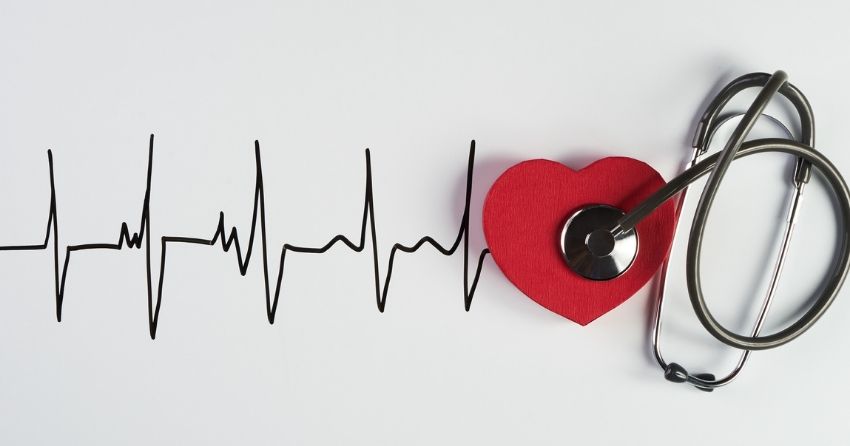A Combination Therapy of NMN and Melatonin Diminishes Tissue Damage After Heart Attacks

Most myocardial infarctions, commonly known as heart attacks, happen in people once they get older, and aging makes it more difficult to recover from this type of injury. More importantly, aging can determine the effectiveness of currently available treatment for cardiac events (1). So, researchers are trying to understand how aging affects the heart and determine what treatments are best suited for heart damage given a person’s age. A study published by Hosseini and colleagues brings us a step closer to addressing this detrimental disease by testing a pair of compounds that may have protective effects against heart damage in older people.
What Happens During a Heart Attack and Reperfusion Injury?
During events such as heart attacks or strokes, blood flow is interrupted and the tissue that is affected by this lack of blood becomes injured. When blood flow is restored, this tissue may sustain further damage as a result of the blood rushing into the injured area. This is known as reperfusion injury. Scientists have studied the events that occur after a heart attack to search for ways to enhance the recovery process of the damaged tissues.
During myocardial ischemia (lack of blood flow to the muscle tissue of the heart, commonly referred to as a “heart attack”), blood flow is interrupted because of damage to one or more of the coronary blood vessels that irrigate the heart. When blood flow is re-established (reperfusion), a series of inflammatory responses take place because of the damage sustained by the tissues affected by the previous lack of blood.
The affected tissue also releases excessive amounts of reactive oxygen species (ROS) that increase damage through oxidative stress. Cardiac cells that survive this first wave of injuries will often have their mitochondrial functions compromised, and this can lead to further dysfunction and even cellular death.
Reperfusion injury increases the damage done after events such as heart attacks. In many cases, damage to heart tissue by reperfusion injury is greater than the damage done by the interruption of blood flow.

Preserving Mitochondrial Function Keeps the Heart Healthy
Due to its well-documented anti-inflammatory properties and antioxidant effects, melatonin has been widely studied for use as a cardioprotectant. Researchers have also found a connection between low levels of melatonin and increased risk for cardiovascular disease in old age (2).
Nicotinamide adenine dinucleotide (NAD+) is a target of cardioprotective research due to its importance as a cofactor for several cellular metabolic reactions and because of its effect on preserving the proper function of mitochondria, the energy-generating structures of the cell. Levels of NAD+ diminish with age, leading to several types of physiological dysfunction. For this reason, scientists have tried to find ways to boost the availability of NAD+ at the cellular level.
One strategy that has produced successful results in animal models is the restoration of cellular NAD+ by supplementation with the NAD+ precursor NMN (nicotinamide mononucleotide) (3). Research done in animals shows that treatment with NAD+ precursors like NMN have cardioprotective effects against ischemia/reperfusion injury (4). However, mitigation strategies to preserve cardiac function after an ischemic event have often only focused on individual therapeutic agents, and the results have not been ideal.
The Combo of NMN and Melatonin Boosts Cardioprotective Effects
Researchers believe that the best approach would be to combine two or more agents that have different cardioprotective effects, such as melatonin and an NAD+ precursor like NMN. A new study published in the Journal of Cardiovascular Pharmacology and Therapeutics shows the benefits of using this combined-therapy approach (5).
The authors carried out tests on an animal model to investigate the individual and combined effects of melatonin and NMN on myocardial function, mitochondrial activity, and oxidative stress status following ischemia/reperfusion injury in aged rat hearts. For the study, the researchers performed tests to measure the condition of cardiac tissue before and after an ischemic event and after perfusion was re-established.
As expected, individual treatment with either melatonin or NMN decreased the size of the infarction site — tissue damaged by lack of blood flow — and improved the function of the muscle tissue from the heart. Both therapeutic agents also replenished NAD+ levels, but the real importance of the study’s findings is that the combined therapy provided stronger cardioprotection than either therapy on its own.
By itself, NMN preserved cardiac tissue by reducing the infarction site, decreasing damage to muscle tissue, and preserving cardiac function. NMN also prevented the depletion of NAD+ at the cellular level, which allowed for the preservation of mitochondrial function. Levels of enzymes that can cause oxidative stress were also much lower in the hearts treated with NMN, confirming the NAD+ precursor’s effects as a powerful antioxidant agent.
Likewise, melatonin preserved the heart’s capacity for pumping blood by preserving mitochondrial function at the cellular level. Melatonin also acted as a free radical scavenger, binding with these harmful agents before they could damage heart tissue further.

Important Insight for Protecting Aged Hearts
These results are especially meaningful for cardiovascular prevention in humans because of the effects seen in these aged hearts. Notably, pre-treatment with NMN increases the presence of available NAD+, enabling mitochondrial function to remain at almost optimal levels in aged hearts even after ischemic/reperfusion injury.
So, NMN treatment, by itself and also with melatonin, is a promising strategy for alleviating cardiac injury after heart attacks. This approach boosted cardioprotection by preventing oxidative stress, protected mitochondrial function, and preserved the heart’s pumping function. Further studies will be needed to understand the effectiveness of this type of therapy in humans.
References:
- D'Annunzio V, Perez V, Boveris A, Gelpi RJ, Poderoso JJ. Pharmacol Res. 2016;109:24-31.
- Dominguez-Rodriguez A, Abreu-Gonzalez P, Arroyo-Ucar E, Reiter RJ. J Pineal Res. 2012;53(3):319-323.
- Yoshino J, Baur JA, Imai SI. Cell Metab. 2018;27(3):513-528.
- Sukhodub A, Du Q, Jovanović S, Jovanović A. Pharmacol Res. 2010;61(6):564-570.
- Hosseini L, Vafaee MS, Badalzadeh R. J Cardiovasc Pharmacol Ther. 2020;25(3):240-250.





